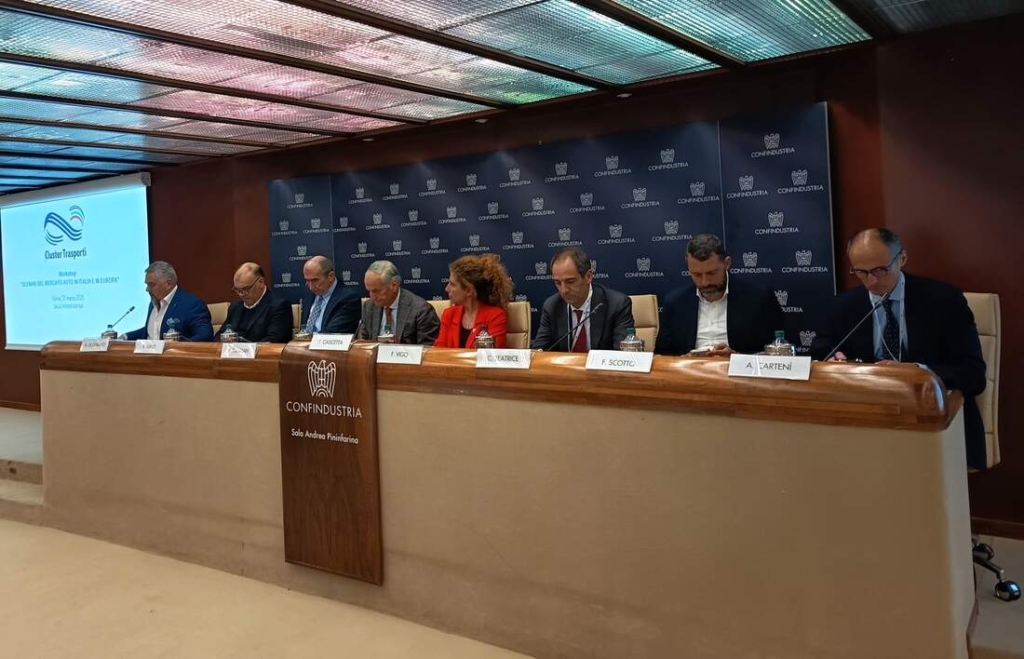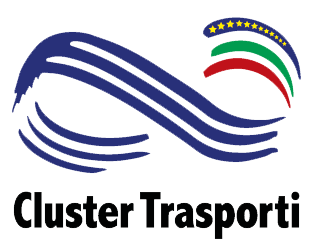National Transport Cluster: a workshop to illustrate automotive market data

Published 9 April 2025
The workshop organized by the National Transport Cluster, entitled: “Automotive market scenarios in Italy and Europe,” took place yesterday in the Pininfarina Hall of Confindustria in Rome.
The workshop was held in the presence of all the Cluster members and some of the main stakeholders in the sector and aimed to delve into the situation of the automotive sector, in light of the new challenges imposed by Europe.
The automotive sector in Italy and Europe is in fact going through a phase of profound transformation, characterized by a structural crisis. This complex scenario derives from the convergence of multiple factors that pose significant challenges to a strategic sector for the continental economy.
The proceedings were opened by the President of the Transport Cluster, Prof. Ennio Cascetta, who declared: “The data for the automotive market in Italy are worrying, not only because of the decrease in sales of new vehicles but also because this decrease is associated with an increase in the size and price of new cars, an increase in used cars in circulation and an increase in traffic.”
Technological neutrality for an eco-rational transition
Prof. Cascetta recalled the need to accept technological neutrality to achieve decarbonization goals: “More cars on the roads – and older ones – go in the opposite direction to the desired decarbonization goals of the sector. It is necessary to reconsider incentive policies and industrial policies if we really want a reduction in climate-altering gases. On some points the proposals of the latest EU document are acceptable, but we still do not see the acceptance of that technological neutrality that the entire scientific community has been requesting for years for a more eco-rational transition that does not unjustifiably penalize industry and motorists” – concluded President Cascetta.
The data emerged: SUVs and hybrid cars
One of the main findings from the roundtable is the marked contraction of the new car market in Italy, which went from 2 million registrations in the pre-pandemic period to 1.5 million in recent years. At the same time, there is a polarization towards larger and heavier vehicle segments, with SUVs holding a dominant market share of 57%.
With regard to the evolution towards low-emission mobility, there is significant growth in hybrid car registrations, reaching 36% of the market. However, it is important to underline that this share is mainly made up of “mild” hybrids, i.e. vehicles with a combustion engine supported by a small non-rechargeable electric motor. On the contrary, the diffusion of pure electric vehicles (BEV) in Italy remains limited, steadily around 4% of new registrations. This figure contrasts with the European average, where the BEV share stands at 15%, although this is also below the optimistic forecasts at the beginning of the decade and the commitments made by many manufacturers.
Family income in decline
A crucial element in outlining the current situation is the decline in disposable income of Italian families, which has decreased by 6% in real terms since 2021. At the same time, there has been a substantial increase in the average price of registered vehicles, from 19,000 to 30,000 euros over the course of a decade. As a result, the cost of a new car in Italy is currently equivalent to 15 months’ work, placing the country in last place in Europe for this indicator.
The expansion of the used market
In this context of difficulty in the new market, we are witnessing a strong expansion of the used market, which has reached a value double that of the new. In the last year, 2.9 million changes of ownership were recorded, with a significant figure represented by 50.4% of transactions involving vehicles over 10 years old. This dynamic has led to a significant aging of the car fleet in circulation in Italy, whose average age has increased from 8 years in 2010 to almost 13 years in 2024, with significant implications in terms of safety and emissions.
Other factors of the crisis
At a European level, the automotive industry is faced with a reduction in sales and growing competitive pressure from Chinese manufacturers, not limited to the electric vehicle sector alone. The causes of this negative situation are multiple and include the effects of health and geopolitical crises, which have led to an increase in the costs of raw materials and energy. A significant role can also be attributed to European policies aimed at a rapid transition to electric, perceived as potentially penalizing for the industry and consumers due to the costs and time required to adapt.
Finally, it is hypothesized that the strategic choices of manufacturers in recent years, focused on high-end models with higher profit margins, with a potential underestimation of the more accessible car segments, have influenced this situation. The growing attention towards the downsizing of the car fleet and the promotion of a technologically neutral approach, which includes the survival of the internal combustion engine through the use of renewable fuels, is leading manufacturers to review their industrial strategies for the coming years, in an attempt to reverse the current market dynamics.
The interventions
Carlo Beatrice, from STEAMS – CNR- explored the role of hybrid engines in the decarbonization of the passenger fleet and the topic of the potential of biofuels: “At the moment, the electrification market is practically being driven by hybridization, evidently it is a product that better intercepts the pockets and needs of consumers. The hybrid can vary between 15 and 30% less exhaust emissions than a pure thermal engine, be it petrol or diesel. And the high number of hybrid sales is doing better than BEVs. This is what we are witnessing”.
On the subject of biofuels, Beatrice stated: “We have seen, in the case of diesel, that the use of biofuel, where it is not possible to electrify heavy vehicles, can be an alternative solution for the transition. Introducing biofuels also for petrol engines could be a clear example of synergy between electrification and the use of the thermal engine in this transition phase.”
Armando Cartenì, of the Technical Mission Structure MIT – Vanvitelli University – has explored mobility scenarios with data from the MIT mobility trends observatory. The data collected shows that the mobility of Italians has increased compared to the pre-pandemic period. Passenger traffic on motorways has also increased, as has intermodal rail traffic. Local public transport, on the other hand, is suffering, the metro and urban transport do not seem to have recovered since after the pandemic and “It is on this asset that the game must be played” – stated Cartenì.
Gianpiero Mastinu (Polimi) addressed the topic of road safety: “There are about a billion road vehicles in circulation worldwide, resulting in over a million deaths per year. Bicycles are increasing significantly and are causing serious accidents. Another topic that we have brought to the attention of the European Commission is the safety of quadricycles, which are vehicles that could become increasingly widespread in urban areas and the Commission has not given the go-ahead for significant funding to improve the safety of these vehicles.”
Regarding road safety software, Manstinu stated: “We are talking about the use of artificial intelligence for accident prevention and therefore the creation of digital Twin models of the entire ecosystem. Traffic, infrastructures for making predictions. These are European projects that will yield initial and not definitive results in the next 3 or 4 years,” concluded Mastinu.
Saverio Gaboardi of the Lombardy Mobility Cluster addressed the issue of renewable fuels: “We as the Lombardy Cluster believe that the abolition of all fossil fuels is achievable. We ask to be able to use only the coal that is already on the surface or in the atmosphere by capturing it. Combining it with hydrogen or using the large renewable carbon mine starting from solid urban waste.”
Fabrizia Vigo of ANFIA analyzed the European Action Plan and underlined the need for technological neutrality: “The ambitious decarbonization objectives must be maintained but manufacturers must be given the possibility to reach these objectives also with other technologies (such as methane) and she also spoke about the fleet decarbonization plan. “The proposal on the decarbonization of company fleets is part of the European automotive strategy plan. 60% of registrations at European level concern company vehicles. The hope is that we can have a legislative proposal that will arrive in time for companies to be able to adapt”.
Finally, Enrico Pisino (CIM 4.0) addressed the topic of the Green Deal: “The challenge of the Green Deal is an opportunity to develop leadership, the sustainability of industry and the market, which is different from environmental sustainability”. Pisino also illustrated the HD-Motion Project, a European hub dedicated to digital mobility that offers access to artificial intelligence methodologies to train people with cost support through discounts on invoices, using PNRR resources in the form of a non-repayable grant. This is an initiative that offers a great opportunity especially to small and medium-sized businesses that do not have an adequate engineering structure to support the transition.
In conclusion, President Ennio Cascetta thanked the Transport Cluster for the analysis work carried out, underlining the importance of the data: “Energy transition, digitalization of everything, from vehicles to services, autonomous driving, are unpredictable transformations in terms of timing and methods. All this places the transport sector in a condition of particular uncertainty and this is precisely why it is necessary to rely on data”.


